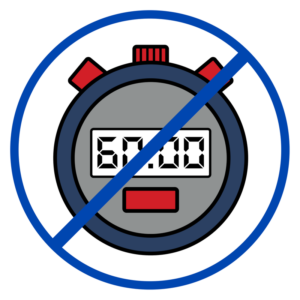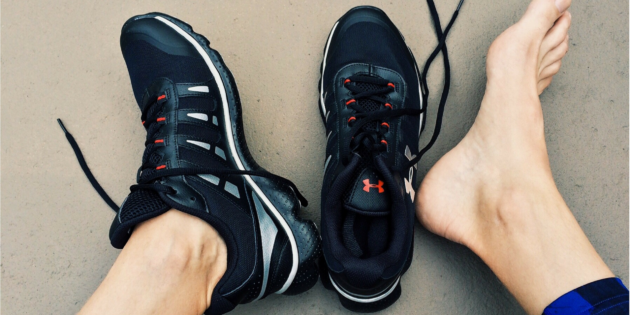Embrace Hills to Maximize Your Potential
Why do you hate running hills?
Becuase it’s uncomfortable?
Because it’s hard to breathe?
Becuase they slow you down?
Because they suck?
I mean, why would you like hills?
Even if you are THAT runner, who claims to love hills; I know you just hate them less than most people.
So, avoiding hills is common. Personally, I am guilty. I can’t have my pace per mile look slow.
Becuase…Strava.
However, hills are inevitable. If you don’t prepare for them, you will pay the consequences on race day.
The facts are training on hills has enormous benefit for runners.
Hills will:
- Engage more muscle fibers.
- Improve lactic takeover.
- Increase strength.
- Build mental toughness
You want to prepare for anything during training, which includes hills. You may even find that it’s just the thought of a hill that hurts more than the incline itself.
So, get ready to get uncomfortable!
Benefits of Hill Running
More Muscle Fiber Activation
Training on hills has a similar effect as lifting weights. You will build strength by engaging more muscle.

(Read more on the benefits of weight training for runners)
he more stress you put on the body, the more your muscle fibers will fatigue. By engaging in more muscle during training you will you will be able to train for endurance and increase your ability to fight fatigue.
Let me ask you a question.
Have you ever bonked?
If you reach a level of fatigue during the race, your body will shut you down. Bonking. Not Fun. Run hills and don’t bonk
Reduce Cramping
Cramping can be caused by a few factors.
- General fatigue.
- Nutrition and hydration
- Overexertion
- Lack of muscle fiber recruitment
Hill training will help you build up a tolerance for race day as you exert a higher effort during training. Hills cause a high level of stress in the body which leads to adaptation. If you train your body at a high level, you will build your endurance and reduce your chances of cramping during the run.
Improved H+ Tolerance (aka lactic acid tolerance)
A hill will push your body to work beyond your comfort zone. If you run a hill hard you can tap into your Anaerobic Glycol system.
Running fast can cause a reaction between hydrogen atoms in your blood and the released Lactate you produce in the Anaerobic Glycol system.
The reaction is also known as the BURN.
Working at this high level will improve your bodies ability to remove lactate from your muscle cells before it reaches the “burn” point.
Lactate is fuel for the body. Training with lactate in your system will help you efficiently use the byproduct fuel.
It ain’t a fun way to train, but it goes a long way!
Here is a PDF from Coach Richard Diaz that gives an in-depth look at Lactic Threshold Training.
How to Train for HIlls
Drop the Watch.
Don’t wear a watch while you run hills. At least don’t pay any attention to your pace.
You are going to be slower on the hills. Just be real.

Runners can obsess over pace during a run. I am as guilty as anyone.
But, your effort is the key factor while running hills
Hill training will help you feel dialed in with your effort level. A heart rate monitor can give you have controlled feedback if you are a stat nerd.
However, don’t worry about your actual pace and think about how you feel on the hill.
Feel your body, control your breath, and listen to your heart rate.
Tempo With Hills.
A tempo run is a sustained pace for a long duration of time.
EX) 30 mins @ marathon pace
It’s pretty simple. Just go out and run a little faster than your regular pace.
Find a hilly area and sustain an effort. Do not worry about the pace, just maintain your effort through the flat and the downhills without intentionally slowing down.
Training a tempo run on a hilly course will allow your body to access the extra muscle fibers going uphill.
Then, you will build endurance during the flats and downs. A tempo run on hills is perfect to build up your runner strength.
Produce Lactate and Keep Running!
Train for speed up a hill by running as hard as you can for 45-60 seconds. Allow yourself to feel the burn!
Tap into the lactic system as you run your hill repeats. You will want to stop, but if you slow too much, your body will flush the lactic acid out of your system.
As an athlete, you can use lactic acid as fuel when trained. Hill training is an easy (but very hard) way to produce lactic acid. Hit a hill at a high level (90-95%) of a max sprint. Once you reach the end of the 45-60 seconds, continue to run at your “regular” pace (not a fast walk or a “sprinter shuffle”).
Help your body learn how to avoid the burn, and on race day you can use it to your advantage.
Mixing your Speed and Stimulus.
To properly train for a race, you will progress through phases to reach your goal.
You will run:
Longer vs. shorter.
Faster vs. slower
More recovery vs. less recovery
The same should go for your hill training. Switching your stimulus and speed to adapt.
Short and Fast
The easiest way to begin hill training is with short and fast hill striders. Think 8 x 10 seconds semi-sprints up an incline. Jog to the bottom and repeat.
Long and Controlled
Take time to work long slow endurance runs on a hilly course to maintain your pace and effort.
H+ (lactate) Tolerance
Hill intervals between 45-60 seconds long where you are running at sub 5k race. Keep your recovery active to work on your lactate utilization.
Threshold Endurance repeat
Long 1000-1600 meter hills at 8k-10k effort to drive your heart rate through the ceiling. Jog to the bottom of the hill for recovery.
Use Progression
Phase your workouts in 3-4 week cycles. Progress your workouts by adding reps or distance each week. Again, use your perceived pace. Not the pace of your watch.
Here is a free hill progression that will take you through twelve weeks of training. These hill workouts can be your primary or secondary workout for the week.
What if I live in Florida?
If you live in a flat part of the world I have some bad news. You will have to get familiar with a treadmill.
Getting the treadmill to 15+ incline is a great way to simulate your hill training. A slight slope outdoors just won’t cut it.
Suck it up, turn on some good music and hit that freakin’ treadmill.
Splitting your time on a treadmill can be mentally relieving.
EX) 20 mins run outside 20 mins of hill training on a treadmill.
Use weight training
You can improve muscle activation and endurance with weight training.
Mix running with weights to simulate the effect of a hill.
Best exercises for muscle activation:
- Box step ups
- Elevated lunges
- Walking lunges
- Weighted squats
Workout EX)
Warm up / Cool Down = 10 min run
Then
5 Rounds
2 mins box steps ups (with weights if possible)
5 min run
Hills are your friend. Get out and make it happen.
Here is a free hill workout progression and add it to your routine today.
Subscribe to my email list to stay up to date all things running,
OCR, and strength training.


